
Jack Benny Vs. the Lone Ranger – And a Lot of Unseen Art
It's high noon in the DVD gunfight arena, and two of the most unlikely opponents square off against each other.
This piece isn't about who is faster on the draw; it is for those who love what is fashionably referred to as Classic TV series these days.
What has me wondering is the different reactions to The Jack Benny Program: The Lost Episodes from SHOUT! Factory and The Lone Ranger – Collector's Edition (2013) from Classic Media.
First, let me state right out of the gate, that if you are a Jack Benny fan or if you are interested in comedians who had enormous influence on comedy through-out the last century, then lost episodes of Jack Benny (that Sarah De Bruin, publicity coordinator at Shout! told me had been discovered in a vault) is a DVD set you will want.
This Jack Benny set is reasonably priced and beautifully packaged, including a booklet on the restoration work done on these episodes that have apparently been unseen for decades.
On top of that you get to see George Burns as the Devil (Maybe that was a precursor to playing God later on, huh?); Jack Benny impersonating Jack Paar's late night interviewing style with Jack Paar watching; Milton Berle trying to transform Jack into his burlesque type of comedy; Gary Cooper doing a Western sketch that Jack would repeat with Clint Walker (not on this set, but I liked the Walker version better);Mel Blanc appears on a Christmas show and talks with Jack about his near fatal car accident which I knew nothing about; Dick van Dyke playing multiple roles in a English murder mystery parody; and a whole slew of others, along with the regular cast of Rochester, Dennis Day, and Don Wilson.
Many of the episodes include the commercials that were performed during the show, and they are often as funny as anything else in the show, and cleverly woven into the texture of that particular episode.
There are even bonus extras, including interviews with people who worked with Jack on the show.
Now here's where the High Noon Showdown occurs with the Lone Ranger.
The Jack Benny Show was a variety show, and often used more than one method to capture images. Some portions might be filmed. Many were videotaped. Some were kinescoped. I'm no expert on the technical side, but that's three different formats. I have no idea what the shows should actually look like, or if they had a uniform look when they were aired.

The booklet included with the Jack Benny Lost Episodes set discusses their restoration efforts. On the Internet, and especially on the Amazon order page for the set, there is debate on the process used to preserve the Benny shows. Reading these, it really does seem that there had to be extra work done to do it in a fashion that seemingly adds frames to the image. You can read the debate itself here.
The bottom line here, for me, though, is that Jack Benny material exists once again for people to see and experience and evaluate in terms of Benny's impact on comedy.
And that even if Shout! screwed it up somehow, it still looks pretty good to me. I'm not arguing with the people who feel it could have been done better, I'm not qualified to comment on that.
What I find curious is that the Lone Ranger – Collector's Edition (2013) seems free of critiques from fans even though these episodes are clocked in at about 23 minutes running time. Yet, the fans writing there seem to give Classic Media a pass.
The Lone Ranger is a filmed show. One knows what a filmed show looks like. But these episodes (like the earlier 75th Anniversary Lone Ranger package) are either time-sped up or cut by at least 4 minutes.
To me, as nice as the packaging might be, as nice as the extras are, the bottom line here is what inspired all this. The show! What I want to see is the show as close to the way it aired as possible.
Which is why, by the way, I keep harping on Warner Archives to include the bumpers for their 1950s western and private eye shows, because no one did this better than Warners, except maybe for Disney, in that time-frame.
When the 75th Anniversary DVDs of the Lone Ranger came out I discussed this with western TV expert Tim Lasiuta. I could not recommend a set where the episodes themselves were extremely compromised.
I don't recall the Lone Ranger action sequences ever appearing speeded-up. They may have been, but I have no recollection of that.
I also find it head-shakingly bewildering that complete episodes of Sgt. Preston (to keep it in the Wrather territory) can be found on DVD uncut or un-speeded up, but not the Lone Ranger, one of the most iconic of TV Western heroes.
Back in the '90s, I worked on a comic series at Jim Salicrup's request for Topps Comics that he wanted to do.
Not Jack Benny Vs. The Lone Ranger, though Jim is, indeed, a Jack Benny fan.
But Zorro Vs. The Lone Ranger and Tonto.
I also worked on a video game for Lorne Michaels's company, which had the rights to the Lone Ranger at the time.
Claude St. Aubin did the illustrations for both projects.
When I went to the offices at Broadway Video, the people there offered to make me prints of Lone Ranger episodes. Now, I'm a collector. I'm a fan. Of course I want this. I want them all. I told them, "You have to tell how many episodes were talking here. Give me a number. Don't leave it wide open, tell me I have carte blanche."
Anyhow, they made me a number of VHS Lone Ranger tapes, from their source material that they used for syndication.
Every episode came in at 23 minutes.
That's what the owners of the Lone Ranger had to work with. So, it makes me wonder if those are the only prints the owners have in existence.

Yet, it also seems to me that the Lone Ranger is still too popular with too many people for their not be 16MM prints at the very least that are complete, and that restoration couldn't be done to restore them.
I could be wrong. But as Monk would say, "But I don't think so."
So, it's odd to me that Classic Media seems to more or less get a pass on reproduction, but Shout! gets taken to task.
As long as we're on the Lone Ranger, let's go back to that comics project Jim Salicrup asked me to do with the three iconic western heroes.
The only way I could see to do this, and make it work, was to have room to set up how Zorro and the Lone Ranger and Tonto could be together since they are in two separate time-periods. My solution was to have three #1 issues.
The entire series was called Zorro Vs. The Lone Ranger and Tonto: Killing Time.
The Killing Time could work on two levels, one on the time factor, the other on a time of wanton killing.
There would be a Lone Ranger and Tonto Killing Time #1.
There would be a Zorro Killing Time #1
And bring them together in Zorro Vs. The Lone Ranger and Tonto: Killing Time #1, which would then proceed into the rest of the mini-series.
What you are about to see here in this Riding Shotgun piece is my copy placement made to comic book size of that first Lone Ranger and Tonto issue. My doing this made it so I knew exactly how the book would read when it saw print. It is the reason that any copy of Gene Colan's pencils on my "Ragamuffins: The Pack Rat Instinct" exist, because of these copy placement Xeroxes.
You will see pages where I had Claude St. Aubin, for various reasons, change art on some pages.
This is the first time any of these pages have been shown anywhere.
They were, until this moment, as lost as the Jack Benny episodes.
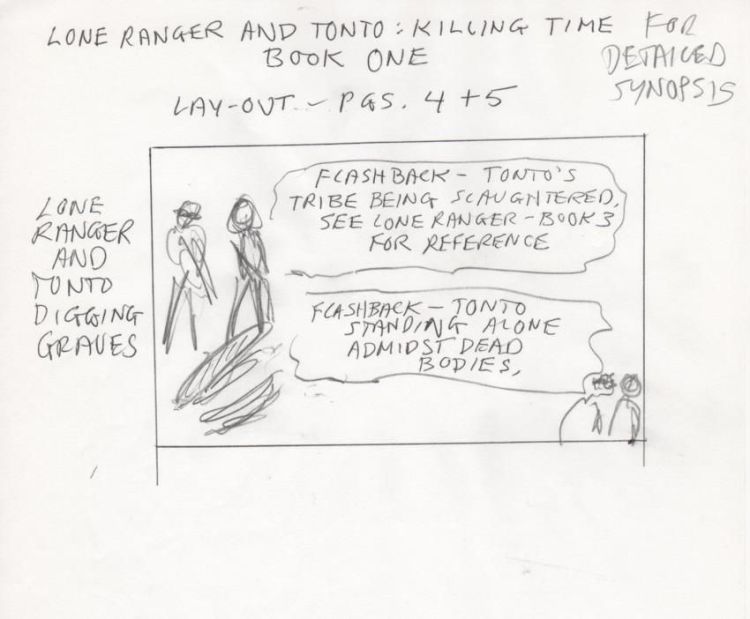
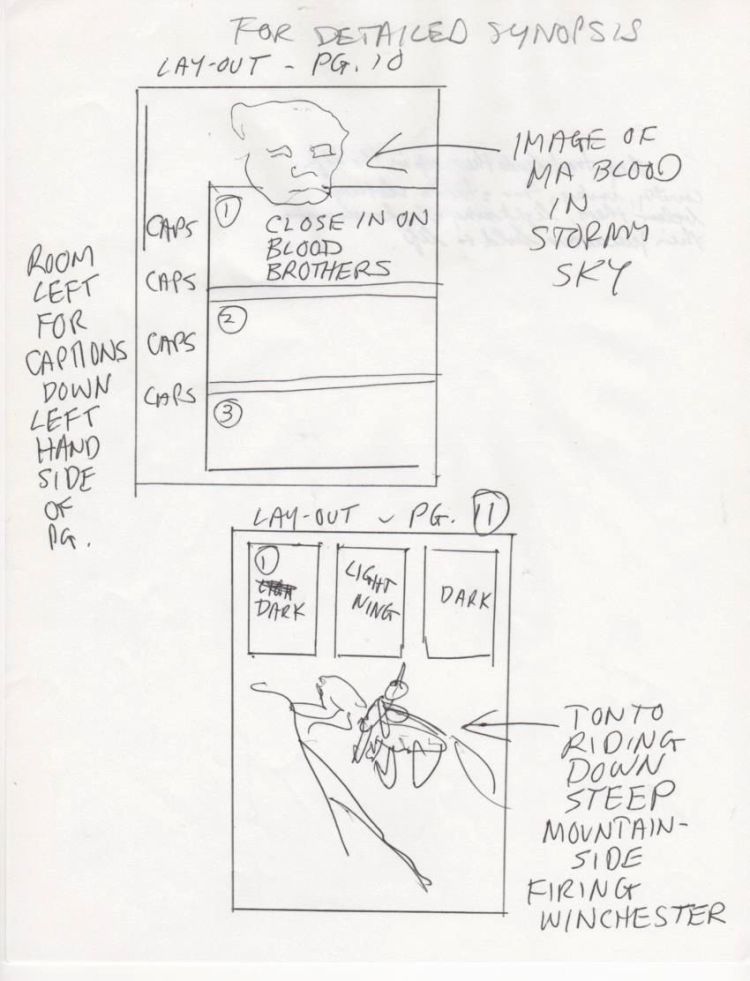
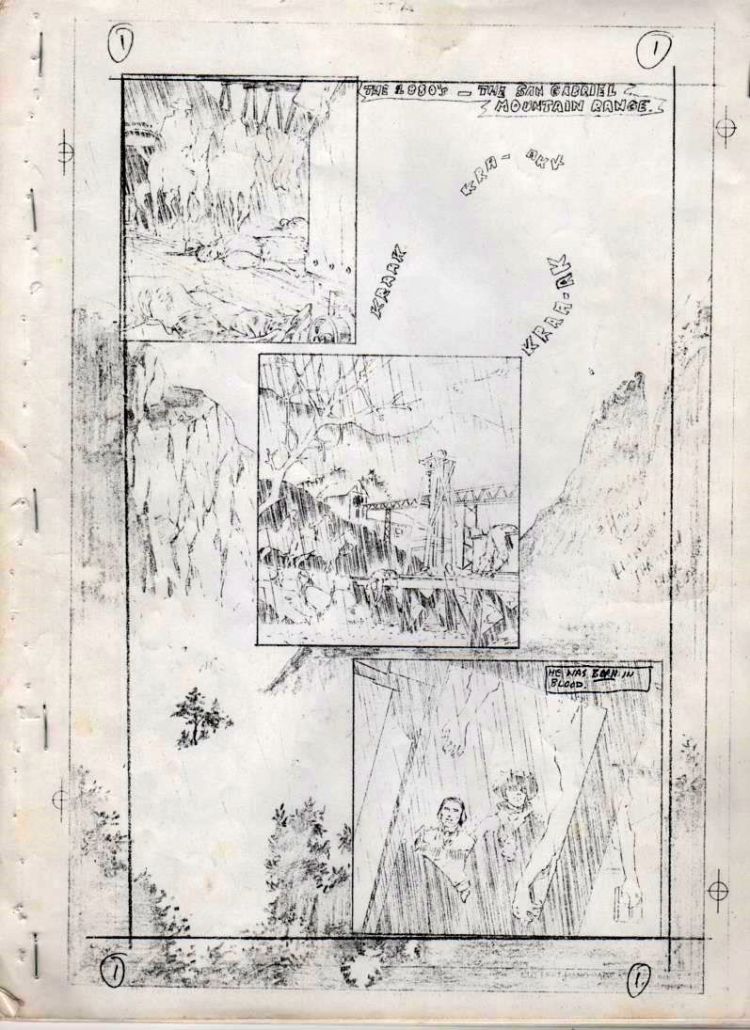

.jpg)
I love this page. Claude captured exactly what I wanted visually and dramatically. And it's only page 3 of the book.

Page 4: Now, as with the Lone Ranger, a glimpse into what emotionally moves Tonto. And hopefully connects emotionally with the reader, as well.

Page 5: The Lone Ranger legend Don McGregor style, as Tonto finds the slaughtered rangers, with Claude St. Aubin capturing the visuals.


When you look at the story-telling here, you'll note that there have been a lot of long shots, with backgrounds, but you can hardly tell that this is the Lone Ranger and Tonto, my feeling was to retain some of the high mountain
landscape and storm, but not lose the visual impact of the two iconic heroes. Thus, the version below:


This is the first time the Lone Ranger and Tonto ride into action, but Claude's approach here is almost impressionistic. It's my feeling if you buy a comic with the Lone Ranger and Tonto, you want to see them in action.Thus, the version you see below:

The storm and the location are still present, but we also have a strong two-some shot of both the Lone Ranger and Tonto that not only showcases them but also has them relating to each other.

The Introduction of MA BLOOD and her three sons, ZECHARIAH, LEVITICUS and EZEKIAL.
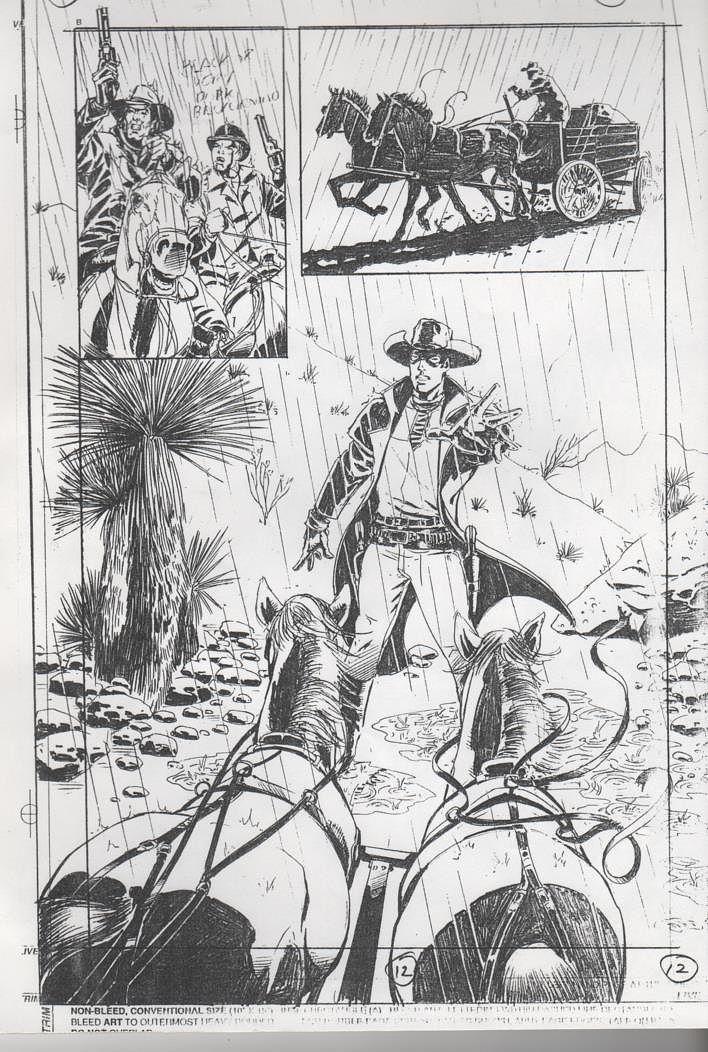
Beautiful last panel as the Lone Ranger steps in front of the Blood Brothers wagon. It's redrawn because the wrong brother was depicted, and the unfolding action would make no sense if that character were where this page said he was. Thus, I had Claude re-do it, to this:
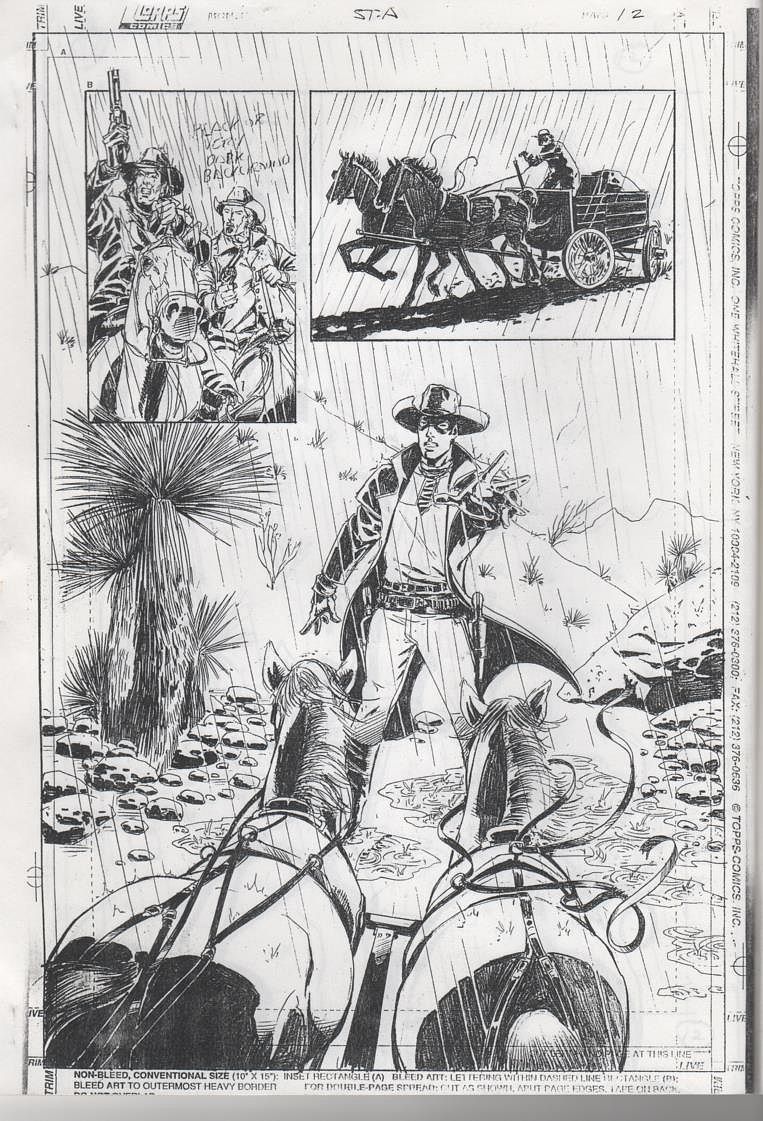
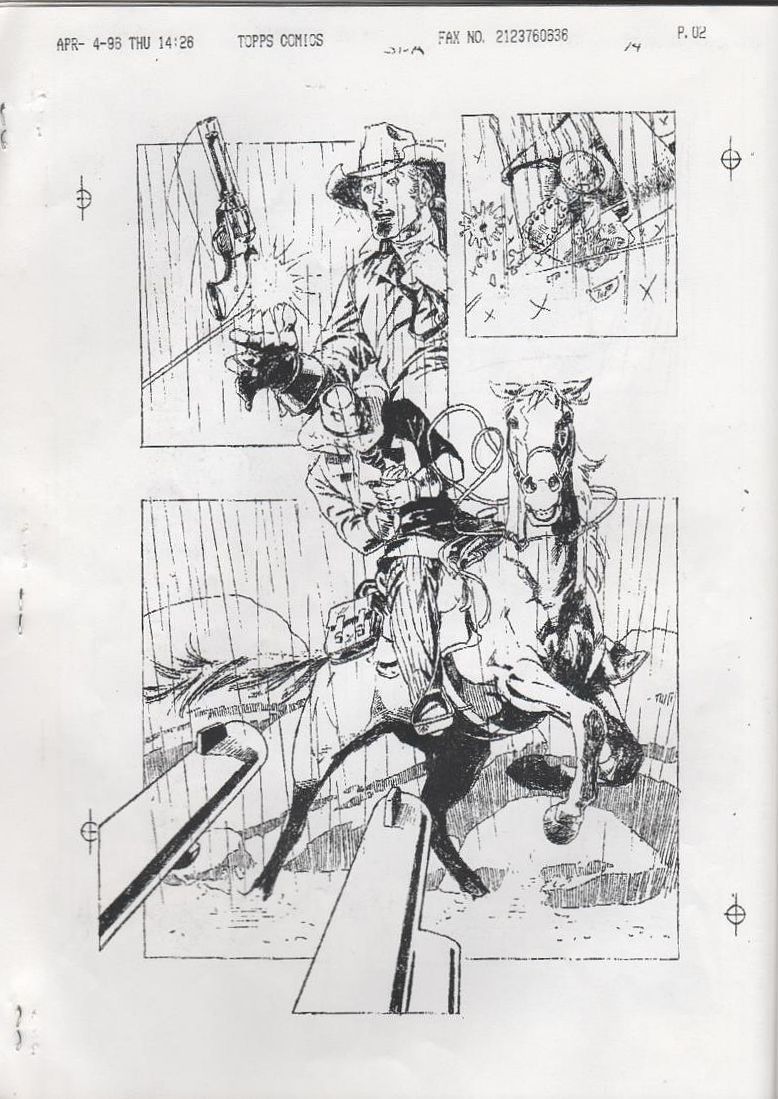
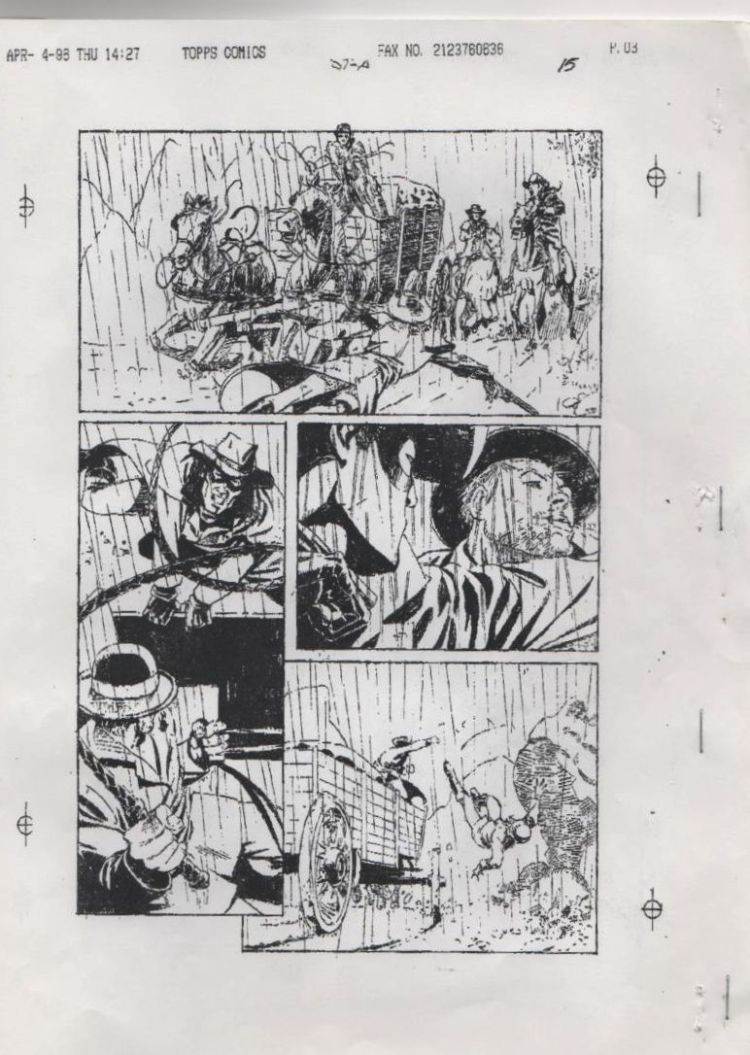
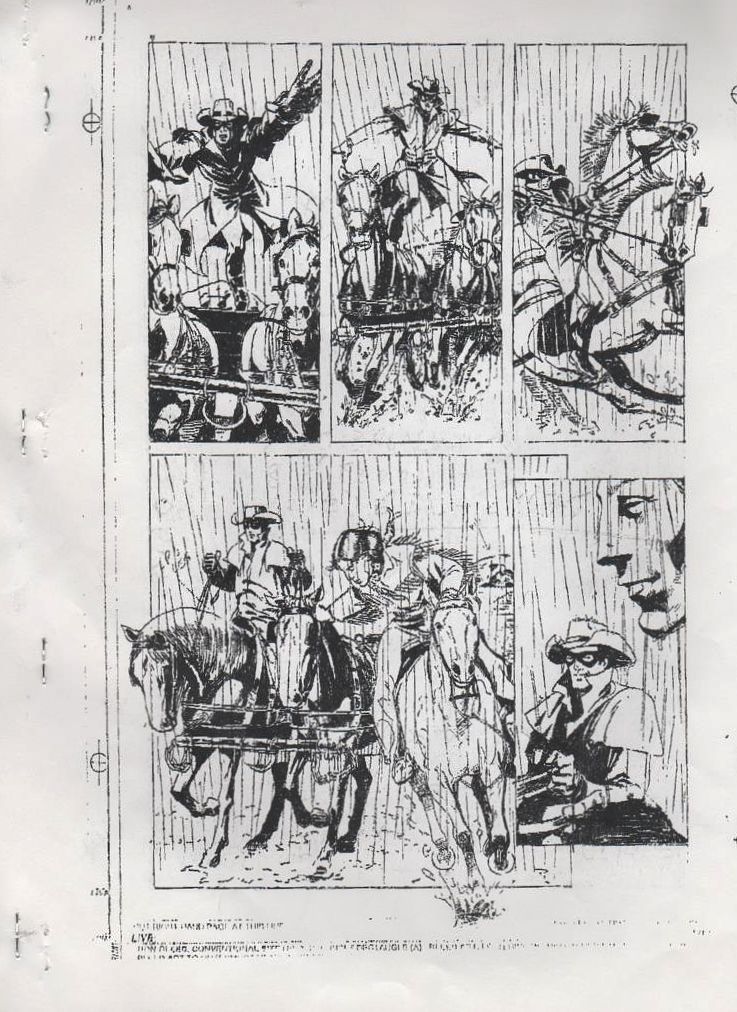

Don McGregor is the writer of Killraven, Black Panther, Nathaniel Dusk and a slew of other classic comic books. Order a copy of The Variable Syndrome and other books and comics by Don from his website or his outstanding Detectives, Inc. at Amazon.
 The Official Website of Don McGregor
The Official Website of Don McGregor